Table of contents
Ideally, garlic granules consist only of dried garlic ( Allium sativum ), which is available raw (raw food quality) when dried gently. By using organic garlic granules, you avoid harmful pesticide residues and support nature.
Uses in the Kitchen
What is granulated garlic? Garlic ( Allium sativum ), granulated (granules), consists of fine grains of dried garlic with a loose consistency. Garlic powder is ground about as finely as flour. Granules are also suitable for use in a spice grinder.
Garlic substitutes such as garlic granules (granulated garlic), garlic powder, garlic salt or diced garlic can be used just like fresh, raw garlic . After drying, garlic is 5 to 10 times more concentrated than the fresh product. How much garlic powder is equivalent to one clove? One heaped teaspoon of garlic granules is equivalent to about one clove of garlic.
Granules contain fine grains, which are more suitable for solid foods. The garlic powder conveniently dissolves and is not noticeable in salad dressings or soups. The garlic products mentioned have a characteristic smell and a mild to sweet taste. Raw garlic (Knobli) tastes much more intense and sharper than the dried alternative and is also healthier because essential substances are retained. The spiciness also decreases when whole garlic cloves are marinated in oil or brine.
Garlic and garlic products harmonize with almost all spices. Garlic granules combined with spicy Mediterranean herbs, as well as wild garlic and chives go well with salty dishes. Herbs from Provence such as thyme, marjoram, oregano, rosemary, savory, tarragon, basil, fennel, sage, bay leaf, lavender and chervil also harmonize excellently with garlic powder. Basil and garlic are a dream couple. As a vegan raw food recipe, we can highly recommend zucchini spaghetti with hemp pesto and almond parmesan .
All garlic products are particularly suitable for savoury dishes, such as spinach, vegetable soups, potato soups, tomato soups, green salads, tomato salads and mushroom dishes. Dips, sauces, dressings, vinaigrettes or pestos always benefit from a hint of garlic.
In Asian cuisine, garlic is used in most curries and masalas (Indian spice preparations). In the Orient, it is often used in vegetable pastes, casseroles and stews. A traditional herb bundle with garlic and about a dozen herbs from French cuisine is called a bouquet garni. In Spain and probably also in South America, people know 'aioli', in France 'rouille' and almost no Italian pasta is made without garlic.
For raw food, you use fresh, unprocessed garlic, and if possible, organic quality. Freeze-dried garlic can also be raw. To do this, the water contained in it is removed under vacuum after freezing.
Making your own garlic granules
Garlic granules are very easy to make yourself: After peeling, cut the garlic cloves into evenly thin slices or small cubes. A garlic grater or ginger grater or the popular garlic press are also suitable. Some professional chefs advise against the latter because the product oxidizes and takes on a bitter taste if it is in contact with oxygen for too long. However, recent studies show that crushing or pressing releases more allicin, the particularly healthy ingredients in garlic. 1 In any case, remove any green shoots beforehand.
The garlic press is more suitable for pastes, e.g. for a dip, pesto or salad dressing. However, for large quantities, this is the quicker method.
If garlic turns blue or green when cut, this is a chemical reaction between amino acids and sulphur compounds – this is completely harmless. 2
When producing garlic granules, the food industry tries to preserve the alliin-alliinase system and prevent any further reaction of allicin by removing water. This is done by quickly cutting the garlic into thin slices of around 3-5 mm and drying it immediately. With a dehydrator, you can set the temperature precisely and produce garlic granules of raw food quality (under 42 °C). In an oven, the temperature can usually be set to a minimum of 50 °C. Some also dry at around 60 °C. The time depends on the device and the temperature, but is at least 5 hours. For the oven method, you clamp a wooden spoon in the door to let the moisture escape. If the slices or cubes are brittle, the garlic is completely dried. The garlic can now be ground into fine garlic powder using a mortar, blender or spice mill.
Vegan recipe for crispbread with garlic granules
Ingredients: 100 g cornstarch, 4 tbsp sesame seeds, 2 tbsp linseed, 2 tbsp sunflower seeds, 2 tbsp pumpkin seeds, 3 tbsp rapeseed oil, ½ tsp coarse sea salt, ½ tsp paprika powder, ½ tsp garlic granules, ½ tsp ground caraway, 150 ml boiling water .
Preparation: Put all the dry ingredients in a bowl and pour boiling water over them. After mixing, let it rest for about 10 minutes. Spread the thick mixture on a baking tray lined with baking paper. Cover with a new sheet of baking paper and roll out with a small hand roller. Remove the top baking paper and cut the mixture into small rectangles with a pizza cutter or knife. Bake in a preheated oven at about 150 °C for about 45 minutes. After cooling, break into pre-cut pieces and store in a container that can be sealed tightly.
Vegan recipes with garlic granules can be found under the note: " Recipes that have the most of this ingredient ".
| Not only vegans or vegetarians should read this: Vegans often eat unhealthily. Avoidable nutritional errors . |
Purchasing - Storage
Garlic granules or garlic powder are available in all standard supermarkets such as Coop, Migros, Denner, Volg, Spar, Aldi, Lidl, Rewe, Edeka, Hofer, Billa etc. Often packaged in spice mills or screw-top glass jars or in small paper bags. Organically produced garlic substitutes can be found in selected (organic) supermarkets (e.g. Denn's Biomarkt or Alnatura ); but in any case in health food stores, drugstores or online shops. Garlic granules are sometimes also available with salt. Preservatives are rarely included, but reading the list of ingredients is still advisable. Make sure the product is organic.
The availability of garlic granules varies depending on the size of the store, catchment area, etc. Our recorded food prices for the DA-CH countries can be found above under the ingredient image - and by clicking you can see their development at various suppliers.
Storage tips
Homemade organic garlic powder should be stored in a clean, dry screw-top jar. If stored airtight and in the dark, the powder will last for several months. Although garlic powder or granules can be kept for up to a year, they lose their aroma and flavor if stored for longer periods. Purchased garlic powder or garlic granules are often packaged in paper bags. To extend the shelf life and preserve the aroma, we recommend transferring the powder or granules to a sealable jar or plastic container.
Ingredients - Nutritional values - Calories
Here we realistically show you the ingredients of spices and herbs per 1 g (instead of per 100 g as usual).
Garlic powder or garlic granules contain around 3.31 kcal per 1 g. The fat content is very low, most of the energy comes from carbohydrates (73%). Proteins make up around 17%. 3 A teaspoon weighs around 2-7 g, depending on the degree of grinding.
Vitamin B6 (pyridoxine), potassium and phosphorus are the most important essential nutrients that garlic powder offers. However, because the amount consumed is so small, they and the macronutrients do not contribute significantly to meeting the daily requirement. Far more important for the health value are the secondary plant substances in this ingredient, which can have an effect even in trace amounts. Although all herbs and spices have many health-promoting ingredients, we deliberately avoid the insubstantial buzzword "superfood" here.
Garlic smell: What can you do about it?
After ingesting garlic or garlic products, especially people who have not eaten it, smell the sulphur-containing allicin on other people's breath. Fresh garlic has a much more intense effect than dried garlic. Garlic smell (allicin) and bad breath (allyl methyl sulphide) come from different substances. When garlic is chewed and swallowed, allicin is formed from alliin and alliinase, which is converted in the stomach into allyl methyl sulphide, i.e. bad breath. This smell lasts for up to three hours and is difficult to get rid of, even by brushing your teeth. 26
What really helps against garlic breath? A good vegan remedy for neutralizing garlic smell is said to be the natural green dye chlorophyll. It is recommended to simply chew fresh herbs such as parsley, sage or mint . In Asia, ginger or green cardamom is used. Whether chlorophyll or products made from it (capsules) really help has not been scientifically proven. Although research in this area began in the 1950s, it was not pursued further. In any case, the smell of urine or intestinal excretions could not be influenced with chlorophyll. 4,5
The skin also releases these odorous substances. The intensity varies depending on the person and the garlic product (whether cooked or not). Although physical sweating helps to get rid of the odor through the skin, it takes about 20 hours for the body to completely break down the substances. Small amounts of garlic have only minimal effects on body odor.
To neutralize the smell on your hands, it can help to rub your hands with salt, lemon juice, vinegar or baking soda . Coffee can also help. Then rinse your hands thoroughly with lukewarm water.
The complete ingredients of garlic granules, the coverage of the daily requirement and comparison values with other ingredients can be found in our nutrient tables. In the article Nutrients explained you will get a detailed insight into the topic.
Effects on health
Is garlic powder healthy or unhealthy or even harmful to health? This determines the amount, because garlic has been proven to contribute to maintaining health. The WHO recommends a daily dose of up to 5 g of fresh garlic or 1.2 g of garlic powder. The maximum dose refers to the content of alliin (12 mg) and allicin (5 mg) per day and varies depending on the variety or product. 30 The health effects of garlic powder are due to the secondary plant substances it contains.
Secondary plant substances
Our article on secondary plant substances provides an overview of the classification of substance groups, their occurrence in food and possible effects on humans. Garlic granules (or dried garlic) contain the following secondary plant substances, among others:
- Isoprenoids: Tetraterpenes ( carotenoids ), triterpenes (saponins and steroid saponins: agapanthagenin, beta-chlorogenin, desgalactotigonin, desgalactotigonin-rhamnose, diosgenin, eruboside B, eruboside B-rhamnose, gitogenin, proto-desgalactotigonin, proto-desgalactotigonin-rhamnose, proto-eruboside B, sativoside B1-rhamnose, sativoside R1, sativoside R2, sativoside R2-rhamnose, voghieroside D1, voghieroside E1, cardenolides, spirostanols, furostanols, cholestane saponins) 17.29
- Alkaloids 17
- Polyphenols: tannins; flavonoids: flavanols (catechin, epicatechin, epigallocatechin), flavonols (myricetin, quercetin, kaempferol, isorhamnetin, hyperoside, rutin), flavanones (naringenin, hesperidin), flavones (tangeretin, luteolin, nobiletin, apigenin) isoflavones (formononetin, biochanin A); phenolic acids: hydroxybenzoic acids (gallic acid, beta-resorcylic acid, 4-hydroxybenzoic acid, protocatechuic acid, syringic acid, veratric acid), hydroxycinnamic acids (chlorogenic acid, caffeic acid, p-coumaric acid, ferulic acid, m-coumaric acid, o-coumaric acid); stilbenes: resveratrol 17,22,29
- Organic sulfur-containing compounds: alliin, allicin, E-ajoene, Z-ajoene, diallyl sulfide, diallyl disulfide, diallyl trisulfide, allyl methyl sulfide, vinyldithiine 27
- Other organic compounds: Phenylpropanoids: Vanillin; Phthalic acid 22,29
However, it should be noted that the composition of the secondary plant substances in garlic granules can vary depending on the variety, time of harvest and growing conditions as well as processing. Therefore, quantities are only of limited use and should only be understood roughly.
From a pharmaceutical point of view, garlic powder is different from other garlic products. Unlike garlic extracts, garlic powder contains the enzyme alliinase. Studies on garlic products must therefore be viewed in a differentiated manner. 13
The high content of alkaloids in dried garlic is responsible for many of its medicinal effects. Alkaloids have analgesic, antiseptic, antibacterial and antimalarial effects, among others. Plants produce saponins as a defense mechanism against attacks by foreign pathogens, making them natural antibiotics. They also have cholesterol-lowering effects and are able to kill or inhibit cancer cells and have antibacterial effects. The saponin cardenolide is known for treating heart failure. Tannins are responsible for garlic's pungent taste as well as its ability to accelerate the healing of wounds and inflamed mucous membranes. Flavonoids offer protection against allergies, inflammation, blood clotting and infections. Carotenoids are mainly responsible for the color of garlic. Overall, these plant ingredients explain many of the known medicinal properties of garlic for various diseases such as arteriosclerosis, arthritis, nausea, asthma, bacterial infections and cancer. 17
Allicin has an antibiotic and antibacterial effect. It is also said to have a vasodilating, relaxing effect, which is said to prevent thrombosis. 6 Allicin inhibits oral pathogens that are associated with tooth decay and periodontitis. This can be seen in the positive effects of garlic applications. 10 Our body converts allicin into hydrogen sulphide through the red blood pigment. Any form of heating reduces the allicin content, as it is very unstable. The sulphur-containing compounds have an antimicrobial and anti-inflammatory effect, thus preventing infectious diseases and helping to combat them. 27
Statistical surveys and some animal studies show that regular consumption of garlic can have preventive or mitigating effects against colon cancer. This is attributed to the antioxidants and sulfur-containing compounds in garlic. 11 Due to its cytotoxic, antiproliferative, cell cycle regulating, anti-inflammatory, anti-invasive and antiangiogenic properties, it is also attributed to a variety of effects on other types of cancer (e.g. breast, gastric, urogenital, lung, skin, hematological and neurological cancer). The phytochemicals in garlic have a cancer-preventive effect by influencing signaling pathways and genes involved in the development and spread of cancer. 29
Ingredients in garlic lower blood lipid levels and can therefore help prevent arteriosclerotic changes in the blood vessels. 7 However, studies on the reduction of cholesterol levels by taking garlic are not always clear and often contradict each other. 8,9
There is evidence that organically produced garlic has more bioactive ingredients and a better antioxidant effect than conventional garlic. 22 However, there are also studies that show no difference. 24 Depending on the pesticides used, these have a more or less negative impact on our health. 23
Dangers - Intolerances - Side effects
Side effects can include unpleasant body and bad breath, stomach pain and flatulence. Signs of an allergy can include contact dermatitis, severe headaches or dizziness. 15 Anyone suffering from blood clotting disorders or who is hypersensitive to garlic should avoid it. 13
There are no known negative effects during pregnancy and breastfeeding with moderate use. Larger amounts can change the taste of breast milk. 16
It is not only fresh garlic that can cause gastrointestinal problems in sensitive people; studies confirm this for garlic preparations as well. In addition to reddening of the stomach lining, in severe cases, the stomach lining can also become erosive. 12 Heartburn, nausea and diarrhea occasionally occur; allergic reactions are rare. There is a cross allergy with tulips and onions. If the stomach reacts sensitively to garlic, you can try 'black garlic' as an alternative - it is less irritating to the stomach. Black garlic is a specially fermented form of garlic. 13
Allium species can be toxic to animals such as dogs and cats. 18
Contraindications are not clear, but there is evidence that too much garlic can increase the effect of anticoagulants and antihypertensive drugs. 16 Garlic also affects bleeding, which is why it should be avoided before operations. It is advisable to avoid garlic products during treatment of an HIV infection with certain medications. 15
Use as a recognized medicinal plant
The HMPC has classified garlic as a traditional herbal medicinal product, and ESCOP and Commission E have also recognized it as a medicinal plant. 16
Garlic and garlic powder can prevent atherosclerosis, potentially alleviate cold symptoms, and are seen as part of dietary measures for elevated blood lipid levels. 15,16
Folk medicine - natural healing
People have been using garlic as medicine for thousands of years. In ancient times, the bulb was used as a vermifuge, diuretic and for toothache; the latter use has continued up to the present day.
Garlic came to Europe in the Greco-Roman period, where it has played a role in European folk medicine ever since. It is used to treat wounds, stimulate labor and as a sympathetic remedy for jaundice. Garlic was also said to help prevent death from the plague. The antiseptic effect of garlic was used in mummification in ancient Egypt. 13
Ecological footprint - animal welfare
The CO 2 footprint of garlic powder is around 1.73-3.15 kg CO 2 eq/kg, depending on the area of cultivation. According to the Swedish database Carboncloud, agricultural production and post-processing make up the largest part. 19 The garlic bulb itself is a climate-friendly food with around 0.6 kg CO 2 eq/kg. 20
The water footprint of The global average for garlic is 589 l/kg, similar to green beans (561 l/kg). Garlic powder uses more water at 2265 l/kg, comparable to raisins (2433 l/kg). 21
For detailed explanations of various sustainability indicators (such as ecological footprint, CO2 footprint, water footprint), see our article: What does the ecological footprint mean?
Animal welfare - species protection
Intensive agriculture and the associated change in nature towards homogeneous landscapes has caused a strong decline in biodiversity. Many species that have lost their habitat were very important for pest control. This causes ecosystems to become unbalanced. Organic farming offers structures that make it possible to preserve biodiversity. Through heterogeneous structures, animal-friendly management methods and the avoidance of synthetic pesticides. 25
Worldwide occurrence - cultivation
Garlic is one of the oldest cultivated plants known to mankind. It is believed that it was first cultivated 5,000 to 6,000 years ago in Southwest Asia. Garlic has always had a great reputation as a food and medicinal product. 13,14
Today, garlic only grows wild in Central Asia (Kyrgyzstan, Tajikistan, Turkmenistan and Uzbekistan). It used to grow wild in a much larger area, from China to Ukraine. 14
Around 3 million tonnes of garlic are grown annually, mainly in the USA, China, Egypt, Korea, Russia and India. 14 The FAO 's public statistics page indicates a global production of green garlic of around 28 million tonnes for 2022. 28
Industrial production
The industrial production of granulated garlic is similar to the production at home: After harvesting, the moisture content should be 65-70%. The garlic is then peeled and chopped and placed in a sodium bisulfite solution for 5 minutes. The drying process takes about 10-12 hours at 45-50 °C. Finally, the garlic is pulverized and sieved to the desired size. It is important that the allicin content is at least 0.45% so that the characteristic garlic smell is retained. 31
Further information
Garlic belongs to the subfamily Alliaceae and the genus Leek ( Allium ).
The genus Allium, which is mainly found in the northern temperate hemisphere, contains, in addition to A. sativum, other species that are useful in cooking as well as medicinally: shallot ( A. ascalonicum STRAND), onion ( A. cepa L.), Chinese shallot ( A. chinense G. DON.), broad leek ( A. porrum L.), chives ( A. schoenopraasum L) and wild garlic ( A. ursinum L.)
The species A. sativum has several varieties: A. sativum var. sativum (common garlic), A. sativum var. ophioscorodon (snake garlic), and A. sativum var. pekinese ('Peking garlic'). 13
The wild garlic mustard ( Alliaria petiolata ) belongs to a different genus, but also has a clearly recognizable garlic taste.
Alternative names
Garlic has many common names: Chlobaloch, Chlobeloch, Chlobelouch, Chlofolouch, Chloviloich, Chlovolouch, Chnobeloch, Chnobleich, Aberknoblauch, Clovalouch, Clovelouch, Gartenknoblauch, Gruserich, Klobelouch, Kloblauch, Kloblouch, Kloflok, Kluflock, Knabelach, Kniuwleng, Knuawlet, Knobelouch, Knoblech, Knoblich, Knoblecht, Knobleig, Knoflak, Knuflak, Knufflóek, Knuflock, Knuftlók, Kruftlók, Loech, Look. In earlier times it was also called 'stinking rose'. 13
In German, garlic is often abbreviated to Knobi, Knofi or Knobel. In Switzerland, the abbreviation Knobli is used. Strictly speaking, the spelling of garlic granules, garlic powder or garlic granulated is incorrect.
In English, garlic is called 'garlic', products made from it: 'garlic granules' (granulated garlic) and 'garlic powder'; larger pieces are called 'dried garlic' or 'freeze dried garlic'.
The name of the drug made from garlic powder is Allii sativi bulbi pulvis. 16
The genus name ' Allium ' comes from Latin and means 'leek, garlic'. The word 'Allium' is related to 'olere', which means 'to smell'. The Latin word ' sativum ' means 'sown, planted'. 13
Other uses
Garlic is also used to make oil macerates and essential garlic oil. There is also an aged garlic extract. The slices are placed in 15 to 20 percent ethanol and the mixture is left to stand at room temperature for about 20 months, which converts most of the allicin into stable sulfur compounds. This is followed by filtering and evaporation under reduced pressure.
Bibliography - 31 Sources (Link to the evidence)
| 1. | Cavagnaro P, Camargo A et al. Effect of Cooking on Garlic (Allium sativum L.) Antiplatelet Activity and Thiosulfinates Content. J. Agric. Food Chem. 2007;55(4):1280-1288. |
| 2. | Cho J, Lee EJ et al. Identification of candidate amino acids involved in the formation of blue pigments in crushed garlic cloves (Allium sativum L.). Journal of Food Science. 2009;74(1):C11-C16. |
| 3. | USDA United States Department of Agriculture. |
| 4. | Nahata MC, Slencsak CA, Kamp J. Effect of chlorophyllin on urinary odor in incontinent geriatric patients. Drug Intell Clin Pharm. 1983;17(10). |
| 5. | Christiansen SB, Byel SR et al. Can chlorophyll reduce fecal odor in colostomy patients? Ugeskr Laeger. 1989;151(27):1753-1754. |
| 6. | Pahlow M. Das grosse Buch der Heilpflanzen: Gesund durch die Heilkräfte der Natur. München: Gräfe und Unzer Verlag. 2013. |
| 7. | Maisaroh S, Zahro C, Puspitosari DR et al. Effective consumption of garlic (Allium sativum linn) on decreasing blood cholesterol levels. IOP Conf Ser: Earth Environ Sci. 2020;519(1):012004. |
| 8. | Reinhart K, Talati R et al. The impact of garlic on lipid parameters: a systematic review and meta-analysis. Nutrition Research Reviews. 2009;22(1):39-48. |
| 9. | Kheirmandparizi M, Keshavarz P, Nowrouzi‐Sohrabi P et al. Effects of garlic extract on lipid profile in patients with coronary artery disease: A systematic review and meta‐analysis of randomised clinical trials. Int J Clinical Practice. 2021;75(12). |
| 10. | Bachrach G, Jamil A et al. Garlic allicin as a potential agent for controlling oral pathogens. Journal of Medicinal Food. 2011;14(11). |
| 11. | Ngo S, Williams D et al. Does garlic reduce risk of colorectal cancer? A systematic review. The Journal of nutrition. 2007;137(10):2264-2269. |
| 12. | Hoshino T, Kashimoto N, Kasuga S. Effects of garlic preparations on the gastrointestinal mucosa. The Journal of Nutrition. 2001;131(3):1109S-1113S. |
| 13. | Bäumler S. Heilpflanzenpraxis Heute: Arzneipflanzenporträts. 3. Auflage [E-Book]. Elsevier; 2021:1424-1436. |
| 14. | De La Cruz Medina J, García HS. Garlic: Post-harvest Operations. FAO Food and Agriculture Organization of the United Nations. 2007. |
| 15. | Committee on Herbal Medicinal Products (HMPC). European Union herbal monograph on Allium sativum L., bulbus. 2017. |
| 16. | Kooperation Phytopharmaka. Knoblauch – Allium sativum L. |
| 17. | Abayomi Y, Fagbuaro S, Fajemilehin SO. Chemical composition, phytochemical and mineral profile of garlic (Allium sativum). J Biosci Biotechnol Discov. 2018;3(5):105-109. |
| 18. | Salgado B, Monteiro L, Rocha N. Allium species poisoning in dogs and cats. J Venom Anim Toxins incl Trop Dis. 2011;17(1):4-11. |
| 19. | Carboncloud. Schweden. Garlic powder China; Garlic powder Sweden; Garlic Powder India. |
| 20. | Greenpeace Schweiz, Stadt Zürich, Planted Foods AG, Branding Cuisine, Tinkerbelle, Inge, myblueplanet, ProVeg International, Dr. Earth, FightBack und Eaternity. All You Can Eatfor climate - Poster. ayce.earth. 2022. |
| 21. | Mekonnen MM, Hoekstra AY. The green, blue and grey water footprint of crops and derived crop products. Hydrol Earth Syst Sci. 2011;15(5):1577–1600. |
| 22. | Najman K, Sadowska A, Hallmann E. Evaluation of bioactive and physicochemical properties of white and black garlic (Allium sativum L.) from conventional and organic cultivation. Applied Sciences. 2021;11(2):874. |
| 23. | Yura WF, Muhammad FR et al. Pesticide residues in food and potential risk of health problems: a systematic literature review. IOP Conf Ser: Earth Environ Sci. 2021;894(1):012025. |
| 24. | Loppi S, Fedeli R et al. Comparison of the mineral and nutraceutical profiles of elephant garlic (Allium ampeloprasum L.) grown in organic and conventional fields of valdichiana, a traditional cultivation area of tuscany, italy. Biology. 2021;10(10):1058. |
| 25. | Gomiero T, Pimentel D, Paoletti MG. Environmental impact of different agricultural management practices: conventional vs. Organic agriculture. Critical Reviews in Plant Sciences. 2011;30(1-2):95-124. |
| 26. | Fukaike M, Miyashita H. How To Eat Garlic Without Causing Bad Breath: Taste reproduction using a taste sensor and presentation of taste and aroma using a fork device. Adjunct Proceedings of the 36th Annual ACM Symposium on User Interface Software and Technology. 2023;27:1–3. |
| 27. | El-Saber Batiha G, Magdy Beshbishy A et al. Chemical constituents and pharmacological activities of garlic (Allium sativum L.): a review. Nutrients. 2020;12(3):872. |
| 28. | Faostat. Crops and livestock products. Green Garlic 2022. |
| 29. | De Greef D, Barton EM, Sandberg EN, Croley CR, Pumarol J, Wong TL, et al. Anticancer potential of garlic and its bioactive constituents: A systematic and comprehensive review. Seminars in Cancer Biology. 2021;73:219–264. |
| 30. | World Health Organization Geneva. WHO monographs on selected medicinal plants. Vol 1. 1999. |
| 31. | Sasmitaloka KS, Hidayat T. The utilization of off grade garlic bulb into garlic powder and its characteristics. IOP Conf Ser: Earth Environ Sci. 2022;1024(1):012015. |

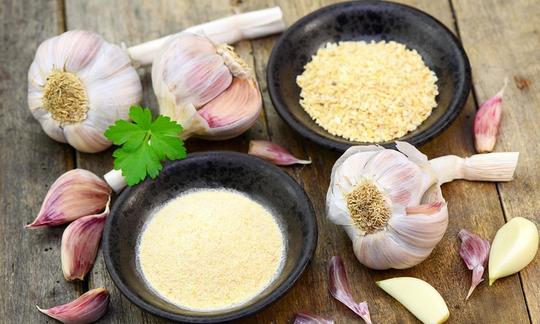

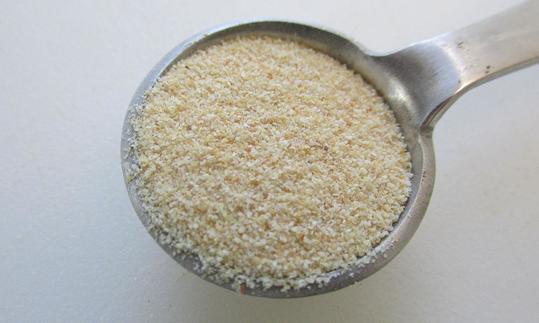

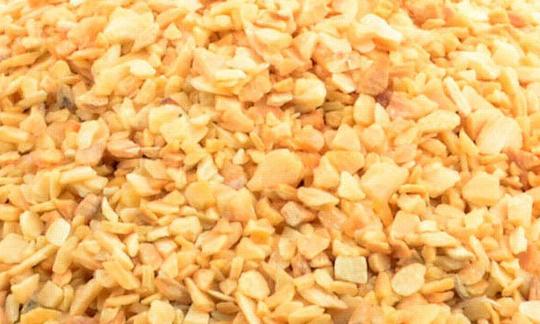

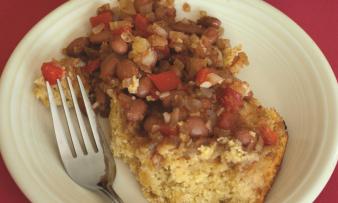
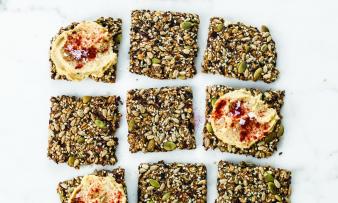
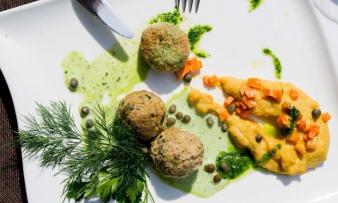


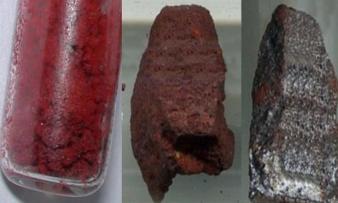


Comments